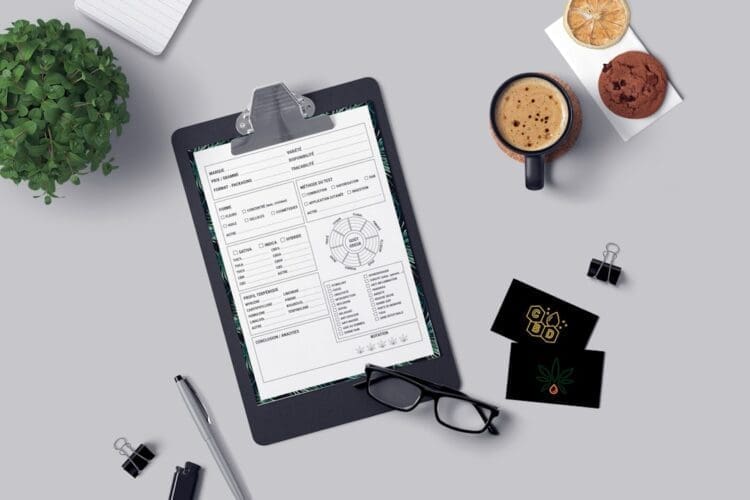
Introduction
In today’s world, knowing how to manage reputational risk is crucial for every business. Whether you run a local cafe or a global corporation, your reputation is one of your most valuable assets. A solid reputation builds trust and attracts customers, while a tarnished one can lead to rapid business decline.
To kick things off, let’s address the essential steps for managing reputational risk:
1. Make reputational risk part of your strategy and planning.
2. Control all processes to maintain high standards.
3. Understand that all actions can affect public perception.
4. Be aware of stakeholder expectations.
5. Promote a positive image through good communication.
6. Have a strong response and contingency plan in place.
Reputation is fragile. As Warren Buffet wisely noted, “It takes 20 years to build a reputation and five minutes to ruin it.” A single misstep can sway public opinion and result in a loss of customers, revenue, and even the entire business. For example, United Airlines faced massive backlash in 2017 when a passenger was forcibly removed from an overbooked flight. This incident led to worldwide outrage and boycotts, illustrating how quickly reputational damage can escalate.
Understanding reputational risk and planning ahead can make the difference between business collapse and continued success.

Let’s delve deeper into what reputational risk means and how you can effectively manage it.
Understanding Reputational Risk
Definition
Reputational risk is the potential loss a company faces when its reputation is damaged. This can happen due to various events such as unethical behavior, data breaches, poor customer service, or negative media coverage. Simply put, reputational risk is the threat to the value of a company’s brand and its ability to conduct business effectively.
Reputation is one of the most valuable assets a company has. It influences customer trust, employee satisfaction, and investor confidence. As Warren Buffet said, “It takes 20 years to build a reputation, and five minutes to ruin it.”
Impact
When a company’s reputation takes a hit, the consequences can be severe and far-reaching. The impacts include:
- Loss of Customers: Customers may choose to take their business elsewhere if they perceive the company as untrustworthy or unethical.
- Decreased Revenue: A tarnished reputation can lead to a significant drop in sales and profits.
- Increased Costs: Companies may face higher operating costs due to legal fees, regulatory fines, or the need to implement new safety or compliance measures.
- Employee Morale: A damaged reputation can affect employee morale and make it harder to attract and retain top talent.
- Investor Confidence: Investors might lose confidence, leading to a drop in stock prices and market value.
Examples
One of the most notable examples of reputational risk is the 2017 incident involving United Airlines.
United Airlines Case Study
In April 2017, United Airlines faced a massive backlash after a video surfaced showing a passenger being forcibly removed from an overbooked flight. The video quickly went viral, sparking outrage and leading to widespread boycotts.
Key Points:
– Overbooking Practices: While overbooking is common in the airline industry, the way United handled the situation was seen as extremely poor.
– Public Outrage: The public reaction was immediate and intense, with many customers vowing never to fly with United again.
– Financial Impact: United Airlines’ stock price dropped by nearly 4% in the days following the incident, equating to a loss of about $1 billion in market value.
The United Airlines incident underscores the importance of managing reputational risk proactively. It shows how a single event, if not handled properly, can lead to a significant and lasting impact on a company’s reputation and financial health.
Other Examples
Wells Fargo: In 2016, Wells Fargo was exposed for opening unauthorized bank accounts. This led to fines, executive resignations, and a significant loss of customer trust.
Toyota: In 2010, Toyota had to recall 8 million vehicles due to safety issues. The recalls and negative publicity cost the company billions and damaged its reputation for quality.
These examples highlight how critical it is for companies to identify potential reputational risks and have plans in place to manage them.
Understanding reputational risk and planning ahead can make the difference between business collapse and continued success.
Next, we will explore essential tools and techniques for managing reputational risk effectively.
Tools for Reputational Risk Management
Managing reputational risk requires a proactive approach. Here are some essential tools and techniques to keep your brand’s reputation strong and resilient.
Social Media Monitoring
Social media is a double-edged sword. It can boost your brand, but it can also harm it if not monitored properly. Social media monitoring tools like Hootsuite or Sprout Social help you keep an eye on what’s being said about your brand in real-time.
- Track mentions: Know when and where your brand is mentioned.
- Engage promptly: Respond quickly to both positive and negative comments.
- Analyze sentiments: Understand the overall sentiment towards your brand.
For example, after a crisis, Toyota used social media to communicate transparently with customers, which helped rebuild trust.
Database Checks
Your brand’s reputation can be affected by the data you keep. Regular database checks ensure that your information is accurate and up-to-date.
- Customer feedback: Regularly review and analyze customer feedback.
- Data accuracy: Ensure all customer data is correct and secure.
- Compliance: Make sure your data practices comply with regulations like GDPR.
By maintaining clean and accurate data, you can avoid misinformation and build trust with your stakeholders.
Response Planning
Having a response plan in place is crucial for managing reputational risk. A well-thought-out plan can save your brand in a crisis.
- Define roles: Clearly outline who is responsible for what during a crisis.
- Crisis communication: Prepare templates and guidelines for crisis communication.
- Simulate scenarios: Regularly run drills to practice your response plan.
When United Airlines faced backlash for removing a passenger from an overbooked flight, their lack of a clear response plan worsened the situation. A prepared response plan could have mitigated the damage.
Due Diligence
Due diligence involves thoroughly vetting all your business partners, suppliers, and even employees.
- Background checks: Conduct background checks on new hires and partners.
- Ethical standards: Ensure all partners adhere to your ethical standards.
- Regular audits: Perform regular audits to ensure ongoing compliance.
For instance, companies like Boeing have faced reputational damage due to issues with suppliers. Regular due diligence can help prevent such problems.
Next, we will dive into the challenges of managing reputational risk and how to overcome them.
Challenges in Managing Reputational Risk
Managing reputational risk is tricky. Here are the main challenges you might face:
Identifying Risks
The first challenge is identifying risks. It’s hard to spot issues before they become big problems.
Internal risks can include poor customer service, lack of transparency, or data breaches. External risks might be negative reviews, regulatory changes, or actions by competitors.
For example, Wells Fargo faced massive reputational damage when it was discovered they had opened millions of fake accounts. This was an internal risk that wasn’t identified in time.
Lack of Standards
Another challenge is the lack of standards. Unlike financial risks, there’s no clear way to measure reputational risk.
Without standards, companies often react to problems rather than prevent them. This is more crisis management than risk management.
Experts suggest creating your own standards and benchmarks to track reputation over time. This can involve regular surveys, monitoring social media, and tracking customer feedback.
Assessing Threats
Finally, assessing threats is complex. You need to understand the potential impact of different risks.
A helpful framework is to look at the reputation-reality gap. This is the difference between what you promise and what you deliver. If the gap is large, the risk is high.
Consider Toyota’s recall of 436,000 hybrids due to safety issues. The gap between their reputation for quality and the reality of the recall was significant, leading to a big hit on their reputation.
Next, we will explore strategies for effective reputational risk management and how to integrate them into your business strategy.
Strategies for Effective Reputational Risk Management
Make It Part of Strategy
To manage reputational risk effectively, integrate it into your business strategy. Start by investigating weaknesses within your organization. Conduct a thorough analysis to identify areas that could harm your reputation.
Engage in scenario planning. Brainstorm potential situations that could damage public perception. For instance, what would happen if a key supplier failed? What if a product recall was necessary? Planning for these scenarios helps you prepare for real-life challenges.
Control Processes
Standardization and strong policies are crucial. Implement consistent processes to ensure quality and reduce the chance of errors. Use technology to monitor and manage operations efficiently.
For example, a restaurant could use a digital checklist to ensure cleanliness standards are met daily. This reduces the risk of negative reviews about hygiene.
Public Perception Awareness
Board involvement is essential. The board and top management must recognize the importance of reputational risk management. They should lead by example and promote positive messages to key stakeholders.
Employee training is another critical element. Regular training ensures that all employees know how to behave and respond appropriately in any situation. When reputation is at risk, employees must act quickly and responsibly.
Understand Stakeholder Expectations
Know what your clients expect. Don’t make promises you can’t keep. If you say your product is eco-friendly, make sure it truly is. Meeting expectations builds trust and loyalty.
Regularly review your crisis management plan. Are new employees aware of it? Have potential risks changed? Stakeholder engagement is key. Keep everyone informed and involved.
Positive Image and Communication
Focus on customer service. Always aim to provide excellent service. If a mistake happens, be transparent about it. Transparency builds trust.
Good governance practices also matter. Ensure that your business operates ethically and responsibly. This reduces the risk of scandals and builds a positive image over time.
Response and Contingency Plans
Be prepared with quick response strategies. If the worst happens, act swiftly. Every minute counts in a crisis. Have a clear crisis management plan in place, detailing who does what.
For example, United Airlines faced a severe backlash in 2017 when a passenger was forcibly removed from an overbooked flight. A quick, sincere apology and immediate corrective actions could have mitigated some of the damage.
Next, we will explore how to monitor and adapt to reputational risk to ensure your strategy remains effective and up-to-date.
Monitoring and Adapting to Reputational Risk
Online Presence
Your online presence is your brand’s face in the digital world. Regularly monitor platforms like Google, Yelp, and social media for reviews and mentions. Tools like OneStop Reviews can help centralize this information, making it easier to respond promptly.
For example, Google Alerts can notify you whenever your brand is mentioned online. This allows you to address potential issues before they escalate.
Stakeholder Engagement
Engage with your stakeholders—customers, employees, and partners—regularly. This builds trust and keeps you informed about their expectations.
Surveys and feedback forms are effective ways to gather insights. For instance, customer satisfaction surveys can highlight areas for improvement, while employee engagement surveys can reveal internal issues that might affect your reputation.
Adapting to Expectations
Stakeholder expectations evolve. Stay ahead by being proactive. For example, if customers expect faster service, look into ways to streamline your processes.
Scenario planning can help anticipate changes. Create different scenarios and plan responses. This way, you’re prepared for various outcomes, reducing the risk of being caught off guard.
Learning from Mistakes
Mistakes are inevitable, but learning from them is crucial. Analyze what went wrong and how it was handled. This helps improve your crisis management plan.
For instance, after the United Airlines incident, the company revamped its policies to prevent similar issues. This not only addressed the immediate problem but also improved their long-term reputation.
By actively monitoring and adapting to reputational risk, you can maintain a positive image and build stronger relationships with your stakeholders. Next, we will look at how to conclude your strategy and ensure you have a comprehensive approach to managing both digital and physical presence.
Conclusion
Managing reputational risk is crucial for any organization, and at OneStop Northwest, we understand the importance of a comprehensive approach. Our goal is to ensure that your business not only survives but thrives, even in the face of potential reputational challenges.
We offer a holistic strategy that covers both your digital and physical presence. This means we help you monitor online reviews, manage social media interactions, and maintain a positive public image. But we don’t stop there. We also focus on the physical aspects of your business, ensuring that your customer service, governance, and overall operations are aligned with your brand values.
By integrating these elements, we create a robust reputation management plan that addresses all potential risks and helps your business grow stronger. With our advanced tools and expert advice, you can confidently navigate the complexities of reputational risk and maintain the trust of your stakeholders.
Ready to take control of your reputation? Learn more about our services and see how OneStop Northwest can help you build and maintain a stellar reputation.






